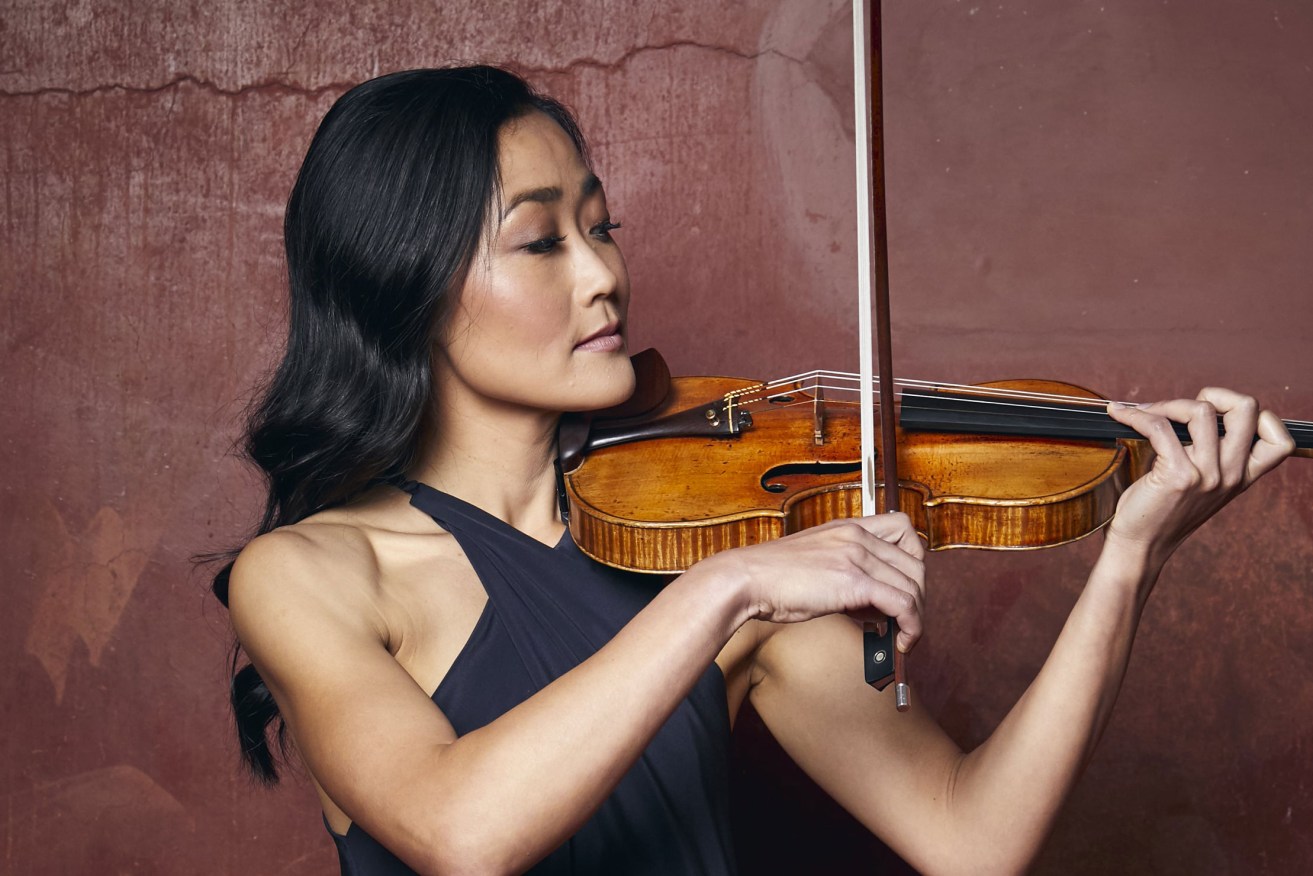Music review: Natsuko Yoshimoto and Daniel de Borah
Violinist and former ASO concertmaster Natsuko Yoshimoto was back in Adelaide for a performance at UKARIA with pianist Daniel de Borah that flowed from passionate expression and the unashamedly melodic, to a more experimental piece reminiscent of the sounds of a hurdy-gurdy.


Violinist Natsuko Yoshimoto. Photo: Claudio Raschella
Having just a week earlier sampled their flagship event, UKARIA 24, it was now time to try out some more of the usual fare that goes on at UKARIA Cultural Centre’s exquisite concert hall at Mount Barker Summit. Except that a return appearance by the ever-wonderful violinist Natsuko Yoshimoto was never destined to be “usual” in any shape or form.
Since leaving for Brisbane in 2020, Yoshimoto has (unsurprisingly) gone on to become concertmaster at the Queensland Symphony Orchestra – the same position she held here at the ASO for 12 years – and she has continued her career there as a chamber musician as well, performing regularly with the Queensland Conservatorium’s new group, Ensemble Q.
But here she was back in Adelaide again, with pianist Daniel de Borah, showing all the excellence of tone and composure that are the hallmarks of her playing. There is a special lustre that Yoshimoto draws from the violin: warm and burnished, it calls to mind the style of her teacher, the great Yehudi Menuhin (whom she learned from at the Yehudi Menuhin School in the UK), particularly in the way she applies an even vibrato and employs the instrument’s full resonance.
The deep sonority of “The Adelaide”, a fabulously valuable Guadagnini violin that is held by UKARIA and was loaned to Yoshimoto three years ago, continues to suit her extremely well.
In Schumann’s Violin Sonata No. 1 in A, Op. 105, the matchup was perfect. This late chamber work begins with fervent, broiling melody low down in the violin’s register accompanied by waves of arpeggios in the piano. The instructions on the score are unambiguous: Mit leidenschaftlichem Ausdruck, or with passionate expression. And what a great performance we were off to: all gorgeously flowing, with no strain, nothing forced, and romantic effusion meeting academic discipline. Pure Schumann.
One sensed an added intensity to Yoshimoto’s playing in this sonata, especially when it came to its beguiling Allegretto second movement, which slips into simple, unadorned song. There are moments when the violin has to hold a single note, as if musing for a moment, and Yoshimoto did this beautifully. Some of the finest musicians work skilfully with silence, and she is one. Meanwhile, one kept admiring de Borah’s superb precision and evenness of touch in this movement’s numerous twists of mood. These two musicians play with such ease and unity of mind that they don’t seem to have to think about it, and the final movement, a moto perpetuo, was flawlessly knitted together.
This program, which the duo previously gave at the Tyalgum Music Festival in northern NSW in September, was buttressed on the other side by Brahms’ very comparable Violin Sonata No. 1 in G, Op. 78, Regensonate. It owes its name to his Regenlied, Op. 59/3 (Rain Song), whose poetry (by Klaus Groth) recalls the lost joys of childhood, and whose sad-tinged melody Brahms directly quotes in its third, final movement.
Their performance, while not quite sharing the same intensity as the Schumann, was delivered with as much care; and it revealed just how close these two composers were in the spirit of their chamber music. Although separated by 28 years, these two violin sonatas plotted the course in the post-Beethoven era by arriving at essentially the same solution: the infusion of song in instrumental composition. Such a Romantic thing to do. At the same time, the shadow of Beethoven’s Violin Sonata no. 10, Op. 96, is everywhere apparent in the Brahms sonata, in its introspection and sweetly circulating figures in thirds.
Kodály’s music can have an astringent edge, but his Adagio for Violin and Piano is an unashamedly melodic piece (from early on in his career) that can melt the heart. Here, it did exactly that with wonderfully hushed, prayerful playing from Yoshimoto. Like the Schumann, this piece exploits the dark realms of the violin by using its bottom two strings but occasionally reaching high to let the sun in, as it were. This was the concert’s loveliest, most personal performance.
The program included a more experimental, modern work by Kodály’s Hungarian compatriot, György Kurtág – his Three Pieces for Violin and Piano, Op. 14e, from 1979. The ASQ used to play his music when Yoshimoto and James Cuddeford were members, and it was interesting to revisit this composer and witness the kinds of sounds he can generate in the violin. In this case, being an arrangement of his Herdecker Eurythmie op. 14b, for flute, violin, recitation and tenor lira (or vielle tenor), it re-creates the zingy, droning and rustling sounds of a hurdy-gurdy. All rather fun, while intellectually serious at the same time.
Making a visit to UKARIA always brings ample rewards, and while the calendar is starting to wind down elsewhere, its concerts keep going well into December. Totally worth going if you haven’t been there yet.
Natsuko Yoshimoto and Daniel de Borah performed at UKARIA Cultural Centre on Sunday.




